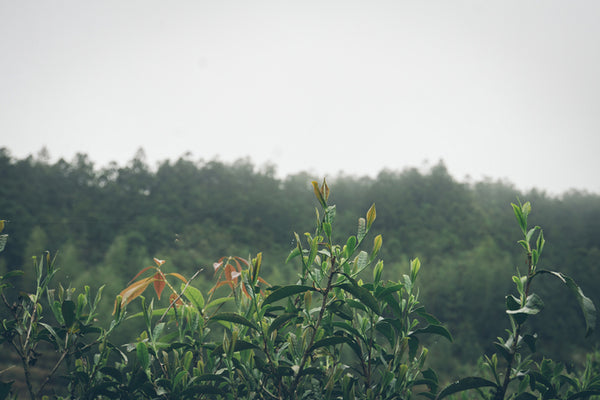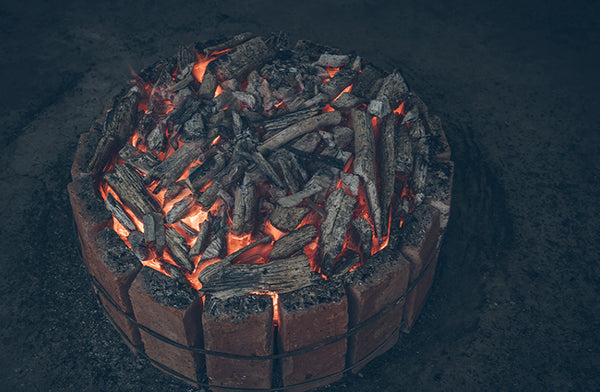
First of all, let's get to know what is Qing Wei!
Generally speaking, grassy taste and stinky grassy taste can be judged by flavor. The most important feature of stinky grassy taste is green and astringent, and grassy taste does not have the green and astringent feeling, but has more fragrance of grass. Generally speaking, grassy flavor mostly refers to Pu'er tea, rarely refer to white tea!
So does white tea has a grassy taste?
We all know that the "shaping" process of white tea depends entirely on the process of withering. As long as there is sufficient time, the water in the fresh leaves can be effectively evaporated, which will increase the enzymes in tea and convert them into glucose and amino acids needed by our body! In terms of aroma, it will form what we often call the fragrance of grass, fruit or flower!

The fresh leaves of white tea are required to has "three whites", that is, both the sprout and the two tender leaves have pekoe exposed, and the finished tea is full of hairs,and that is why it is called "white tea". Such white tea not only has thick buds and leaves, pure fragrance, but also has orange and yellow soup color, fresh and mellow taste. Comparatively speaking, the wild white tea is slightly thicker and fuller than the tea in artificial tea garden, with richer natural flavor of the mountains, and it can combine sweetness and lusciousness smoothly, so with such a cup of white tea in hand is like, frankly and sincerely meeting with the mountains and rivers, trees and grass, the heaven and the earth.
The original color of nature is the essence of life. With such authenticity, white tea can withstand repeated brewing. In such a cup of tea, we can see our own life, ordinary but out of common, light and tasteful.

Some people say that Qing qi is a common problem in white tea. In fact, it is gratifying to see that high-end white tea generally has Qing qi, which proves that the craftsmanship is relatively natural and there is not much human intervention or manipulation.

As for the Qing qi of white tea, I personally think that it is divided into grassy taste and grassy fragrance. If the craftsmanship is in place, the new tea should be green and fruity; if the grass taste is heavy, it means that the craftsmanship is lacking. Of course, in order to conceal the greenness, there are also various ways to remove the greenness, so that the new tea has neither the greenness nor the fragrance.

At present, with the highest degree of mechanization, the most efficient and fastest way is to use high temperature (above 60°) to promote the formation of tea aroma and the volatilization of greenness, because we know that green substances have a lower boiling point, while mellow substances have a higher boiling point. Drying at a higher temperature for an appropriate time can promote the formation of white tea aroma. Of course, if the pursuit of efficiency is excessive while the withering time shortened, the finished white tea is easily bitter.

The second more practical way is to pile up to promote the micro-fermentation process. Many tea lovers have drunk white tea with pantothenic acid. In fact, part of the reason is that the pile-up process is not handled properly. Why do we call it "Da Dui" instead of "Wo Dui"? After all, the micro-fermentation of white tea is not as heavy as the fermentation of black tea, and it is not as fierce as the fermentation of wine brewing microorganisms. The micro-fermentation of white tea is only to create a micro-environment for the enzymatic reaction of white tea to appropriately promote transformation.

In this process, humidity control, temperature control, as well as the length of the pile-up time, and the thickness of the stacking all have a great impact on the quality of the later stage.
As for the white tea with traditional craftsmanship, it actually takes time to transform the Qing qi into flower pekoe fragrance, soy milk fragrance and so on... I have seen the craftsmanship of top silver needle. After withering with the traditional way, it is first dried with charcoal fire (slow fire around 40°). After that, it is re-baked with charcoal fire (about 35°) at an interval of ten days, and then baked at an interval of about 35° with charcoal fire at an interval of one month, and stored for a period of time before being sold.

White tea withering is a slow process of biochemical transformation. If the withering time of fresh leaves is too short, the greenness of white tea is too heavy, which will adversely affect the aroma and taste of white tea. Appropriately extending the withering time of fresh leaves will help the further transformation and accumulation of tea contents, and reduce the greenness and astringency in white tea.

In the production process of new tea, if it is affected by different factors, such as high temperature and humidity during the withering process of fresh leaves, white tea will easily produce a stinky grass taste and so on.









